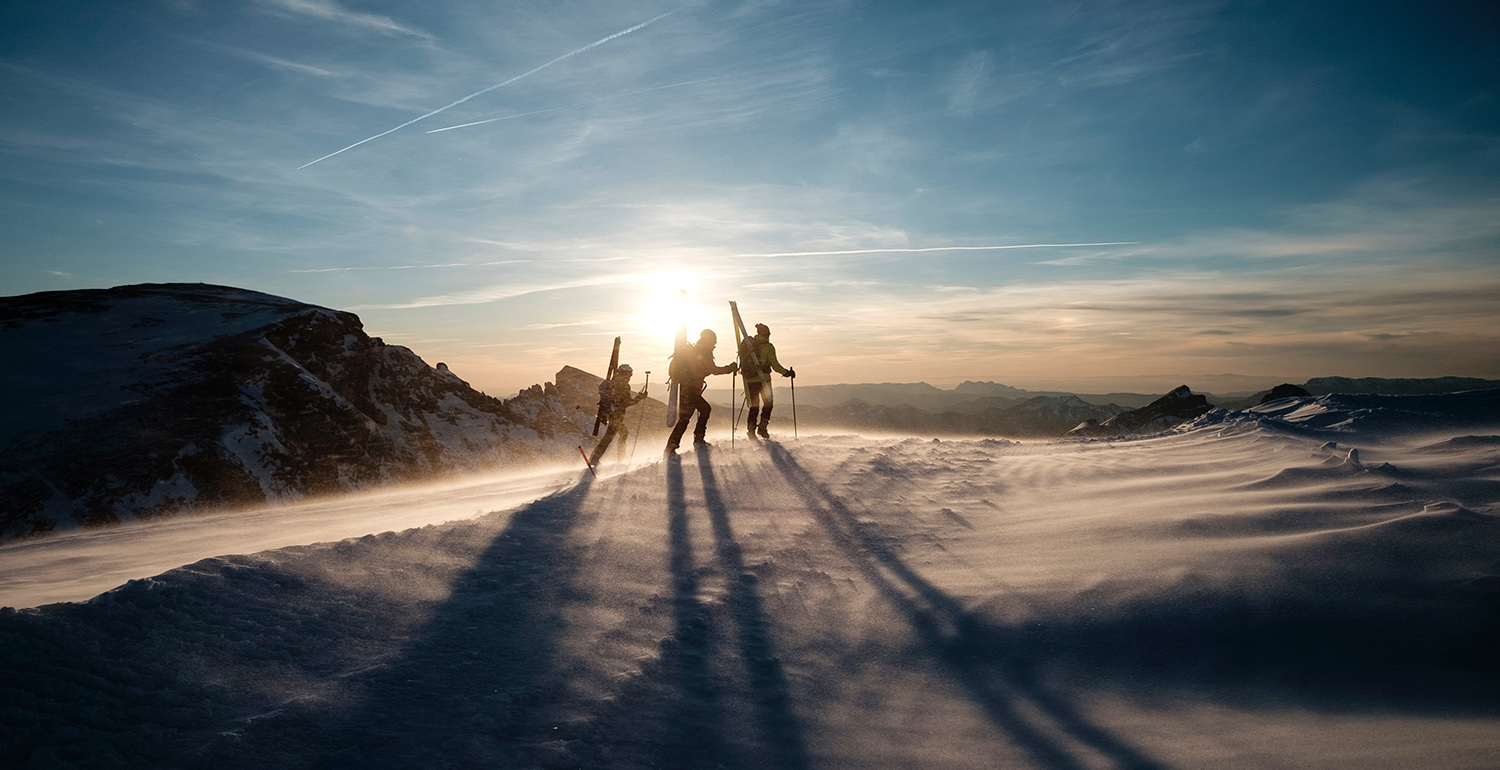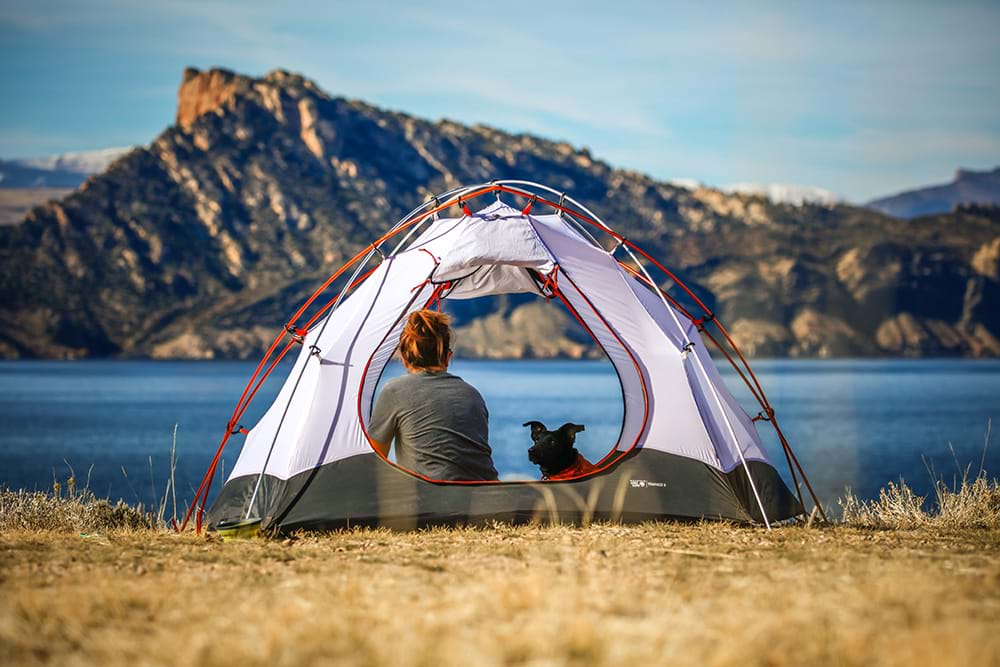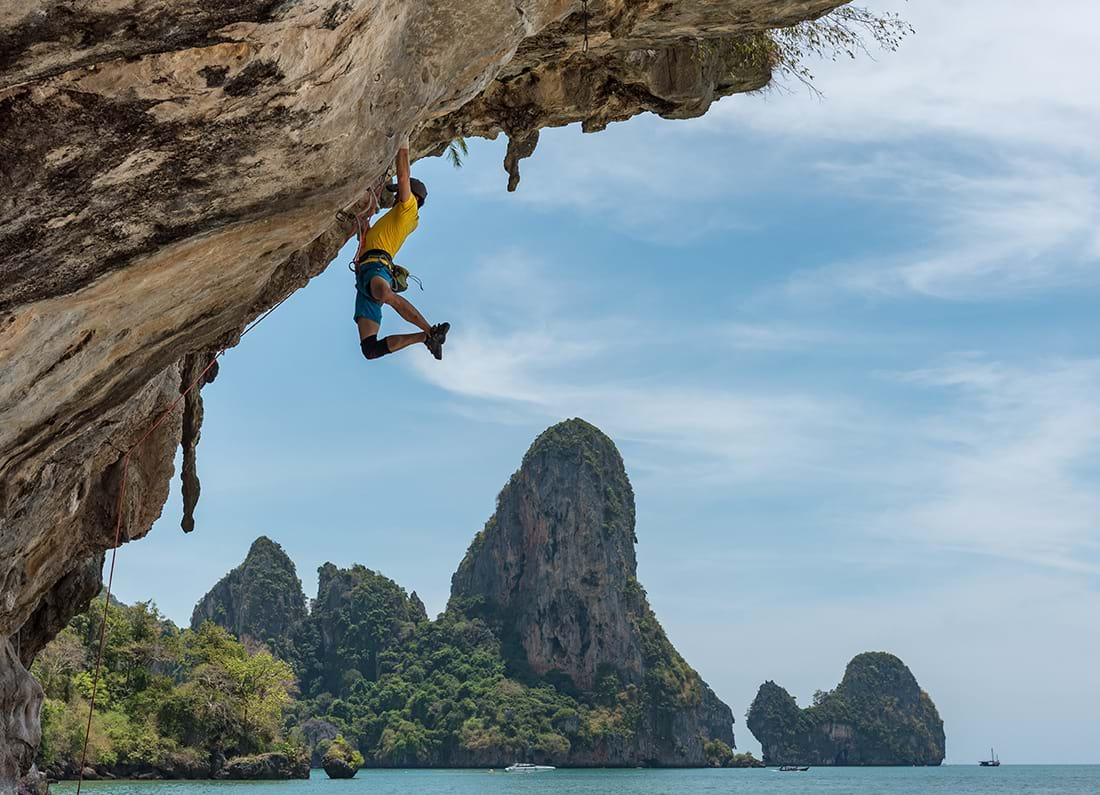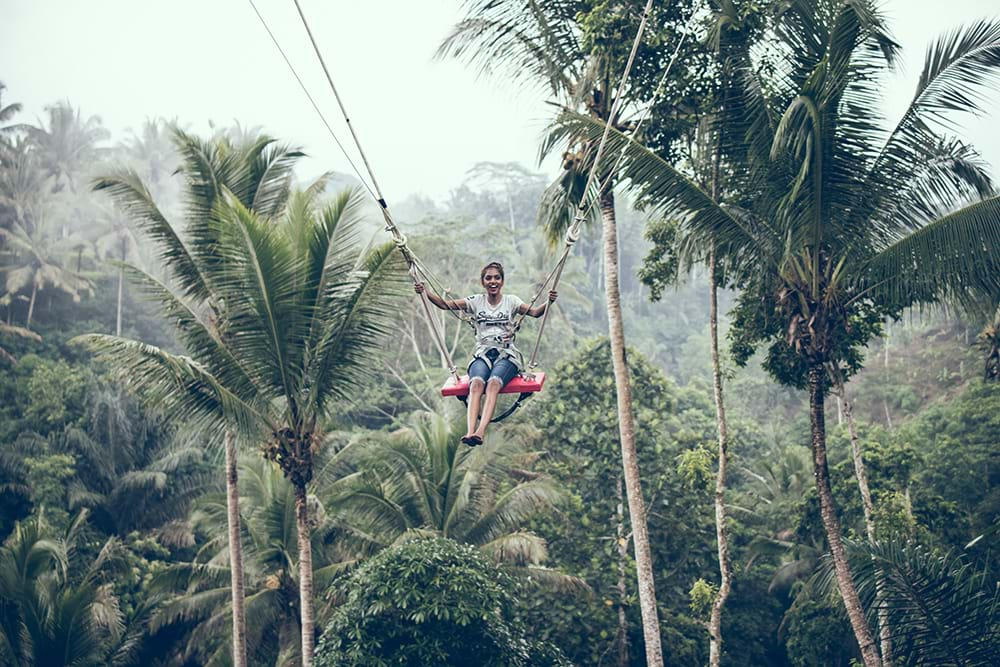 Photo by Joris Berthelot on Unsplash
Photo by Joris Berthelot on UnsplashWHAT IS ADVENTURE TRAVEL?
People have been trying to figure out what adventure travel is almost since Hannibal crossed the Alps on elephants.
The truth is that adventure travel is largely self-defined. Wherever your comfort zone lies, anything that gets you out of that comfort zone and exploring the world beyond qualifies as adventure travel.
So a dogsled trip across the Arctic? Sure. But also an easy stroll around Jordan Pond at Acadia National Park.
Bungee-jumping into a West Virginia gorge? Of course. But also walking around the Roman ruins.
The Adventure Travel Trade Association defines adventure travel as anything involving “a physical activity, a cultural exchange, or activities in nature,” but it’s okay if you don’t agree with that. An adventure to you is fine by us.
However, there are a few types of adventure travel that most people agree on. Here’s what they are – along with recommendations for doing them safely.
 Photo by Ivana Cajina on Unsplash
Photo by Ivana Cajina on Unsplash
HIKING AND BACKPACKING
Hiking takes two basic forms – day hiking, where your hike takes part of a day, and backpacking, where your hike may take multiple days and involve camping.
No matter how long your trek, safe hiking requires you to:
- Know where you’re going. This means taking paper maps and knowing how to read them, and knowing how to use a compass. This also means knowing if your route takes you through country that has frequent animal attacks or is experiencing political unrest or crimes against hikers.
- Take along a GPS device other than your phone. Handheld GPS devices like these can do a better job than a phone at showing your exact location and where to go from where you are.
- Stick to the trail. While you can get lost following trails, the fact is that you’re still on a trail, and with judicious use of maps and a compass you should be able to find your way back. Even if you feel incredibly lost, do not venture off the trail.
- Bring along plenty of water. High-altitude hikes in cooler weather can dehydrate you almost as fast as a walk through the desert. Bring twice as much water as you think you’ll need.
- Pack food. Hiking can burn a surprising amount of calories. Take along lots of high-quality fuel – nuts, dried fruits, and protein sources. They don’t call it “trail mix” for nothing.
 Photo by Patrick Hendry on Unsplash
Photo by Patrick Hendry on Unsplash
CAMPING
Camping has come a long way since the days of roughing it in a canvas pup tent. Now you can “glamp” it up in everything from a vintage Airstream to something straight out of Arabian Nights. However, many of the safety rules are unchanged.
- Make sure your equipment works. Pitch your tent in your backyard. Check for leaks and torn screens.
- Know where you’re going. See our recommendations on hiking.
- Keep all food secure and out of the reach of animals. This does not mean keeping all the chocolate bars with you in your sleeping bag. This means securing food in animal-proof containers and suspending them from trees or storing them inside a locked car.
- Promptly dispose of all trash. This isn’t just good for the environment. Trash attracts animals.
- Tell people where you’re going and when you’ll be back. This is highly recommended for all types of adventure travel, not just camping.
 Photo by Chen Hu on Unsplash
Photo by Chen Hu on Unsplash
MOUNTAIN CLIMBING
There are lots of ways to climb a mountain, from a barehanded scale up a sheer rock face to a leisurely stroll on a trail. Regardless how you climb, these safety tips will help make it go smoothly.
- Check and double-check your equipment before starting your climb. Replace frayed ropes or balky carabineers.
- Wear the right shoes. There’s a reason why they’re called “hiking boots.” If you’re doing anything more than a casual walk, don’t scrimp. Get boots with sturdy soles and tough uppers – waterproof, if you can. Tennis shoes won’t cut it.
- Know the conditions at the top and bottom. The smooth path in the sunshine may turn into a stiff climb through snow. Know what you’re getting yourself into.
- Dress appropriately. Dress for the summit and the base. Pack layers.
- Hydrate and fuel up. Carry snacks and lots of hydration.
- Set a time limit. You may think it will take less time to get down than to get up, but you may be surprised. Divide in two the time allotted for your climb; go as far as you can by halftime, then descend. Descending a mountain in the dark is neither safe nor fun.

BIKING
Whether mountain biking or road biking, touring or single-tracking, these safety tips will help make your bike trip safer.
- Plan your route. Use paper maps to determine your route, or use routes and trails recommended by a peer-to-peer site like Bikemap. Read route and trail reviews, looking for comments on narrow shoulders, congested roads, rock-strewn trails, or washouts.
- Check your equipment. Make sure your chain is properly tensioned, your derailleurs and shifters work properly, your tires are inflated, and most importantly, check your brakes.
- Wear a helmet. If you can, get a MIPS helmet, for extra head protection. Use a taillight, too. On a bike it’s “see and be seen.”
- Understand the rules of the road where you’re biking. Just because there are more bikes in Europe doesn’t mean that bikes always have the right-of-way. Read up on local traffic laws and customs if you’re biking overseas.
- Decide on a meetup time and place. It’s easy to get separated when you’re biking. Settle on a time and place to meet before you leave.
- Carry a bike-repair kit. At a minimum you should have a spare tube, mini-pump, tire irons and a set of bike wrenches.
- Know what “black diamond” means for the trails you’re riding. A tough trail in Durango will probably be tougher than a super-tough trail in Michigan’s Upper Peninsula. Know what you’re getting yourself into before you dive down the chute.
- If you do an “out-and-back” or circle route, don’t overextend. Don’t do a 50-mile loop if you haven’t biked 10 miles at a stretch. The temptation is to push yourself; resist the temptation.
- Hydrate and fuel up. Once again, carry snacks and lots of hydration.
 Photo by Artem Beliaikin on Unsplash
Photo by Artem Beliaikin on Unsplash
ZIPLINING AND BUNGEE-JUMPING
Many people think of these activities as the epitome of adventure travel. Here’s how to do them safely.
- Know the reputation of the outfitter. Read impartial reviews, checking for safety ratings.
- Wear appropriate safety gear. You’ll need a good, sturdy harness and a good-fitting helmet at a minimum.
- Understand that most travel insurance plans will not cover these types of activities. Read the exclusions in your travel insurance policy. If you’re not covered and you don’t feel safe, don’t go.
BOATING AND RAFTING
Punting on the Thames or tubing down a lazy river may not fit your definition of adventure travel, but these safety tips will come in handy for the rest of your waterborne activities.
- Investigate your outfitter. Read reviews, focusing especially on the condition of their equipment.
- Check your equipment. Look for leaks, gauges that don’t work, loose oarlocks, frayed ropes, sputtering motors, faulty radios, and broken seats. Insist on a boat, canoe or raft that meets your standards.
- Wear life jackets at all times.
- If you can’t swim, reconsider. Sometimes wearing a life jacket isn’t enough. It’s important to know how to swim in cases of emergency – even if it’s to save others. If you can’t swim, ask yourself if you want to put others in the position of having to save you.
- Know where you’re going. Plot your route carefully, and stick to it. Sometimes attractive-looking channels can turn into swampy dead-ends that are hard to navigate out of.
- Check the weather. If you’re canoeing across a large lake, windstorms can throw you off course and make paddling impossible. Also, high water can turn a leisurely raft trip into a life-or-death situation. Know the weather and water conditions you’re heading into – and expect the unexpected.
- Determine ways of contacting people before you leave. Tell people where you’re going, when you expect to be there, and how you’ll contact them to let them know you’re safe. Know if your cell phone is going to work on the water. Work out an emergency plan, just in case.

SNORKELING AND DIVING
Almost everyone who’s ever visited the Caribbean has wanted to strap on a mask and snorkel and look for brightly colored marine life. Here’s how to do it right.
- Check your guide and outfitters' reviews. Focus on safety ratings and the quality of their equipment.
- Test your equipment. Look for worn hoses, loose connections, and tired seals.
- Understand your dive site. Know where there might be dangerous currents or depths that are a little too difficult for your equipment or skill level.
- Practice the “buddy system.” Always dive with a companion.
- Watch for dangerous marine life. Know what the dangerous creatures are in your area, what they look like, and how to steer clear. Surface anytime you feel unsafe.
 Photo by Jakob Owens on Unsplash
Photo by Jakob Owens on Unsplash
SKIING AND SNOWBOARDING
Whether cross-country skiing or down hilling it, catching some big air or making a big sitzmark, these tips will help you have a safe and fun ski vacation.
- Check your equipment, especially if you’re renting. Make sure bindings are tight, boots fit properly, and you can easily get into and out of your skis or snowboard.
- Get the weather report for your hill. Snow squalls sound harmless, but they can be anything but. Know what you’re in for heading to the slopes and once you’re on them – and if navigating ski-hill traffic in a blizzard bothers you, take the train.
- Understand the general difficulty of the hill. Black-diamond conditions may differ from the East to the Midwest to the West. Don’t get overly ambitious. Start with easy trails and work your way into the tougher stuff.
- Be aware of altitude. If you’ve never skied at altitude you may be in for a shock. You may find it hard to catch your breath, and you may tire more easily. Don’t overdo it the first day.
- Arrange a time and place to meet up, even if you’re going to keep skiing. Having a time and place to check in is always helpful, if to do nothing else but swap stories. On the other hand, if some people are ready to veg in front of a fire, it’s good to know.
With all these activities, check your travel insurance policy before you leave – not only to see if the activity itself is covered, but to make sure your equipment is covered as well.
AdrenalineCare™ from Berkshire Hathaway Travel Protection has extra coverage for adventure gear like skis and diving equipment.
Enjoy your adventures!
Questions About Travel Insurance?
Check out our online guide, "What Is Travel Insurance All About?" We've provided in-depth answers to all your travel insurance questions, starting with the basics.